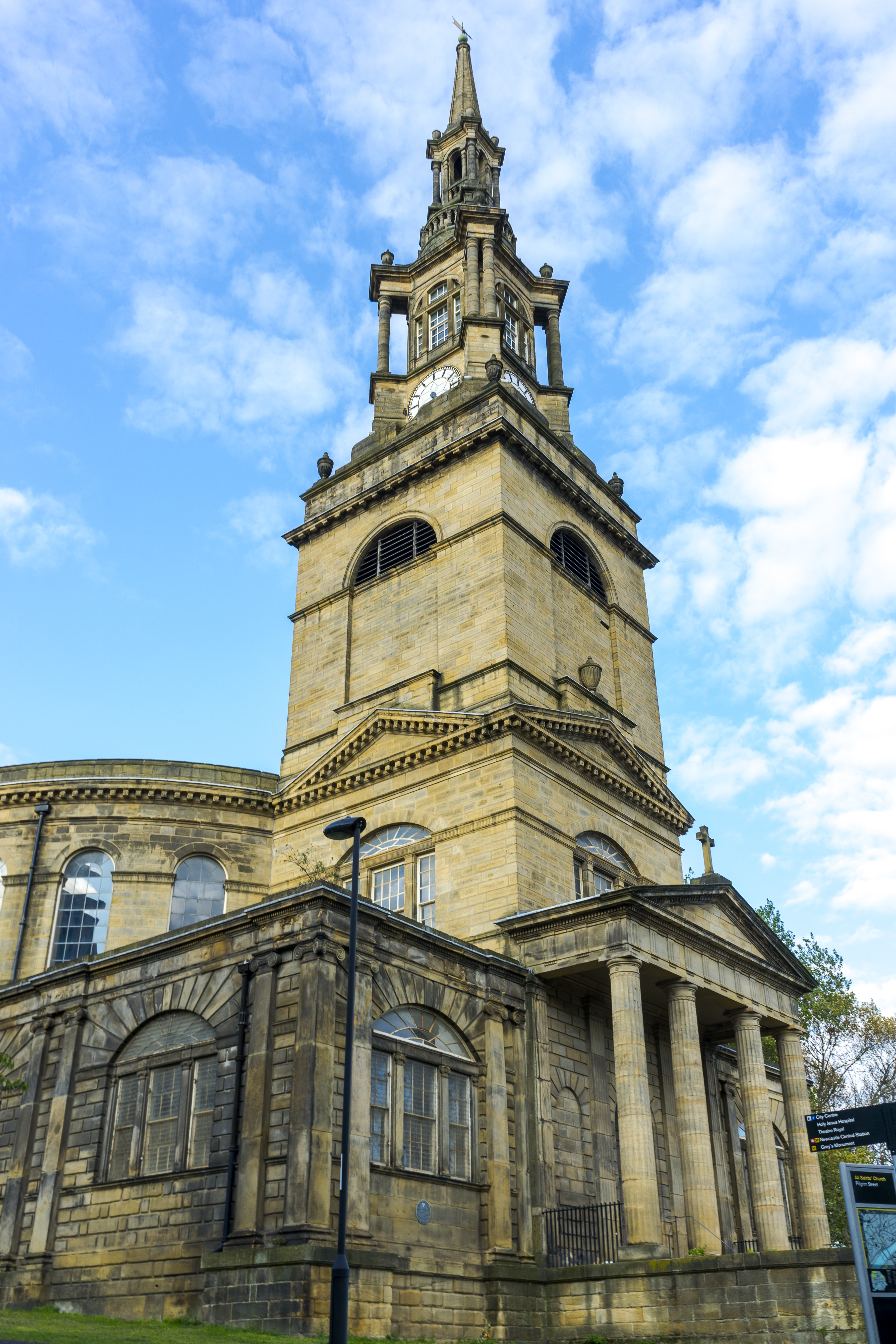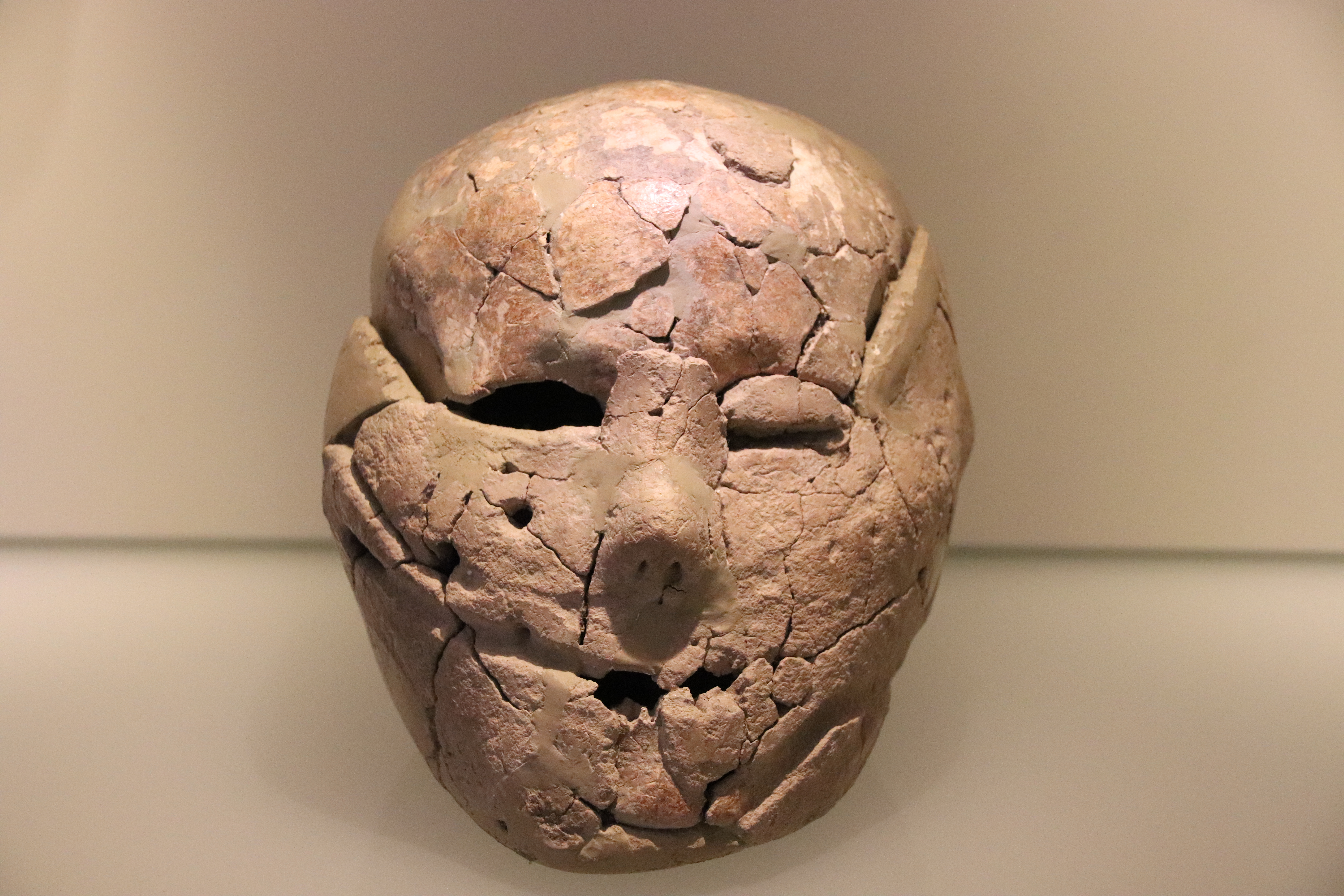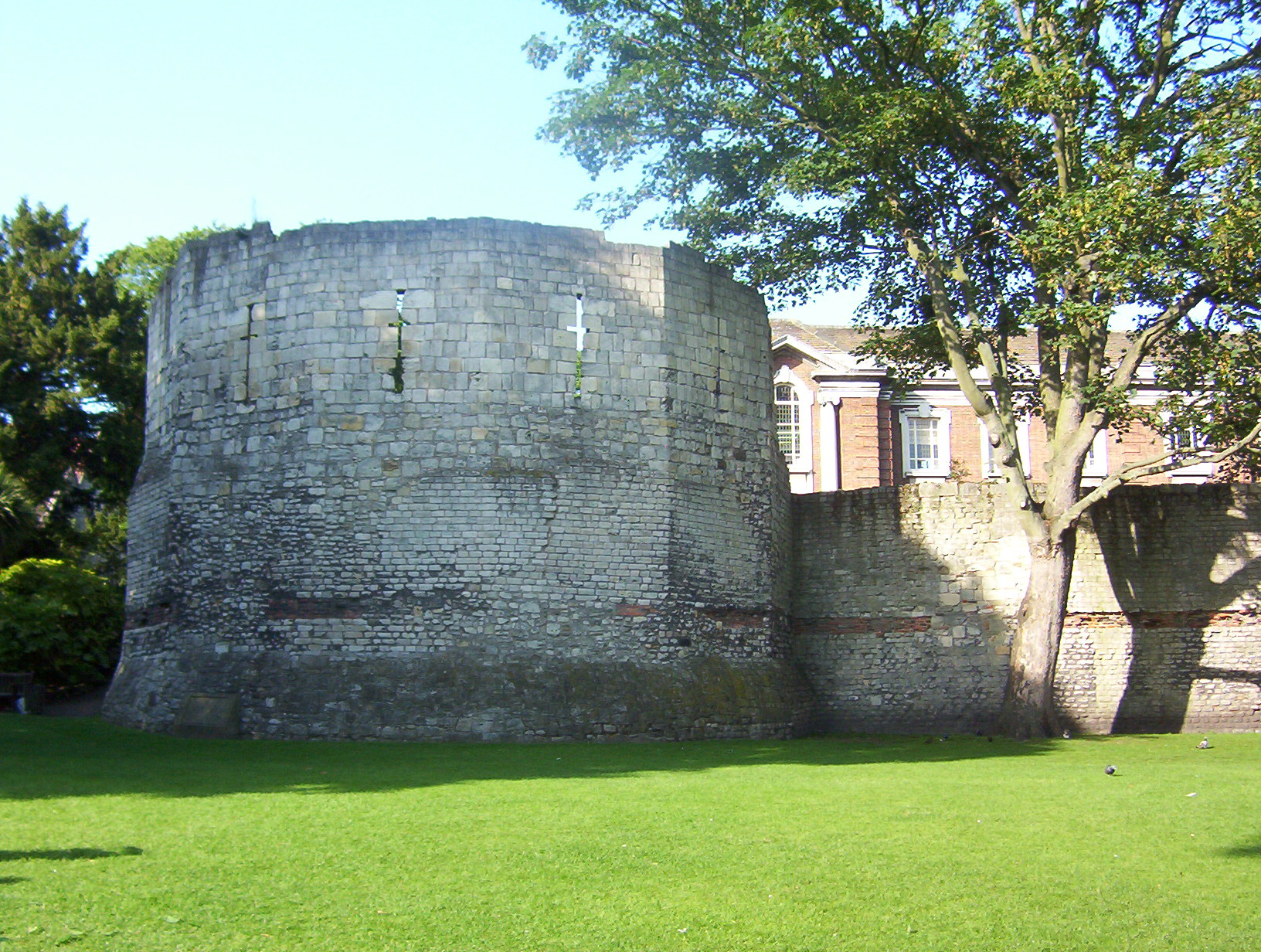|
John Dobson (architect)
John Dobson (1787 – 8 January 1865) was a 19th-century English architect in the neoclassical tradition. He became the most noted architect in the North of England. Churches and houses by him dot the North East – Nunnykirk Hall, Meldon Park, Mitford Hall, Lilburn Tower, St John the Baptist Church in Otterburn, Northumberland, and Beaufront Castle among them. During his career he designed more than 50 churches and 100 private houses. He is best known for designing Newcastle railway station and for his work with Richard Grainger developing the centre of Newcastle in a neoclassical style. Early history Dobson was born on 9 December 1787 in High Chirton, North Shields, in The Pineapple Inn (an earlier building on the same site). He was the son of an affluent market gardener, John Dobson, and his wife Margaret, and young Dobson was educated in Newcastle. As a young child he had an exceptional gift for drawing. Aged 11, he executed designs for a local damask weaver. At the a ... [...More Info...] [...Related Items...] OR: [Wikipedia] [Google] [Baidu] |
Newcastle Railway Station
Newcastle Central Station (also known simply as Newcastle and locally as Central Station) is a major railway station in Newcastle upon Tyne. It is located on the East Coast Main Line, around north of . It is the primary national rail station serving Newcastle upon Tyne, with local rail services provided by the Tyne and Wear Metro network to which the station is connected to by Central Station Metro station, situated beneath the national rail station. The main line serving the station is the East Coast Main Line from London to Edinburgh via Yorkshire and Newcastle. TransPennine Express maintains a frequent service to Liverpool and Manchester, and CrossCountry provides services to the West Midlands and South West of England. The station is also on the Durham Coast Line which provides commuter connections to Gateshead, Sunderland, Hartlepool, and Middlesbrough. Additionally, the station is served by the Tyne Valley Line to Hexham and Carlisle. Direct destinations from the st ... [...More Info...] [...Related Items...] OR: [Wikipedia] [Google] [Baidu] |
David Stephenson (architect)
David Stephenson (1757–1819) was an English architect who worked in Newcastle upon Tyne and Northumberland. He was the first Newcastle architect trained in LondonGrundy, J., McCombie, G., Ryder, P., Welfare, H. & Pevsner, N. (1992) ''The Buildings of England: Northumberland.'' 2nd ed. Penguin Books, Harmondsworth, Middx and was "Newcastle's and the North East's leading architect" Faulkner, T. & Greg, A. (2001) ''John Dobson: Architect of the North East.'' Tyne Bridge Publishing, Newcastle upon Tyne at the start of the 19th century. Life David Stephenson was the son of John Stephenson and Ann Crawforth.Rennison, R.W. (2002) 'David Stephenson 1757–1819' in Skempton, A.W. and Chrimes, M. eds. ''A Biographical Dictionary of Civil Engineers in Great Britain and Ireland: 1500–1830.'' The eldest of five, he was baptised at Castle Garth Presbytery, Newcastle, on 6 November 1757. John Stephenson (died 1796), was a carpenter who built a temporary wooden bridge after the destruction o ... [...More Info...] [...Related Items...] OR: [Wikipedia] [Google] [Baidu] |
Portrait Of John Dobson Architect 002a
A portrait is a painting, photograph, sculpture, or other artistic representation of a person, in which the face and its expressions are predominant. The intent is to display the likeness, personality, and even the mood of the person. For this reason, in photography a portrait is generally not a snapshot, but a composed image of a person in a still position. A portrait often shows a person looking directly at the painter or photographer, in order to most successfully engage the subject with the viewer. History Prehistorical portraiture Plastered human skulls were reconstructed human skulls that were made in the ancient Levant between 9000 and 6000 BC in the Pre-Pottery Neolithic B period. They represent some of the oldest forms of art in the Middle East and demonstrate that the prehistoric population took great care in burying their ancestors below their homes. The skulls denote some of the earliest sculptural examples of portraiture in the history of art. Historical portraitur ... [...More Info...] [...Related Items...] OR: [Wikipedia] [Google] [Baidu] |
Damask
Damask (; ar, دمشق) is a reversible patterned fabric of silk, wool, linen, cotton, or synthetic fibers, with a pattern formed by weaving. Damasks are woven with one warp yarn and one weft yarn, usually with the pattern in warp-faced satin weave and the ground in weft-faced or sateen weave. Twill damasks include a twill-woven ground or pattern.Kadolph, Sara J., ed.: ''Textiles'', 10th edition, Pearson/Prentice-Hall, 2007, , p. 251Monnas, Lisa. ''Merchants, Princes and Painters: Silk Fabrics in Italian and Northern Paintings 1300–1550''. New Haven, Yale University Press, 2008, pp. 295–299 History The production of damask was one of the five basic weaving techniques—the others being tabby, twill, lampas, and tapestry—of the Byzantine and Middle Eastern weaving centres of the early Middle Ages.Jenkins, David T., ed.''The Cambridge History of Western Textiles'' Cambridge, UK: Cambridge University Press, 2003, , p. 343. Used in daily nomadic life this form of weaving w ... [...More Info...] [...Related Items...] OR: [Wikipedia] [Google] [Baidu] |
Portrait Miniature
A portrait miniature is a miniature portrait painting, usually executed in gouache, Watercolor painting, watercolor, or Vitreous enamel, enamel. Portrait miniatures developed out of the techniques of the miniatures in illuminated manuscripts, and were popular among 16th-century elites, mainly in England and France, and spread across the rest of Europe from the middle of the 18th century, remaining highly popular until the development of daguerreotypes and photography in the mid-19th century. They were usually intimate gifts given within the family, or by hopeful males in courtship, but some rulers, such as James I of England, gave large numbers as diplomatic or political gifts. They were especially likely to be painted when a family member was going to be absent for significant periods, whether a husband or son going to war or emigrating, or a daughter getting married. The first miniaturists used watercolour to paint on stretched vellum, or (especially in England) on playing card ... [...More Info...] [...Related Items...] OR: [Wikipedia] [Google] [Baidu] |
Gateshead
Gateshead () is a large town in northern England. It is on the River Tyne's southern bank, opposite Newcastle upon Tyne, Newcastle to which it is joined by seven bridges. The town contains the Gateshead Millennium Bridge, Millennium Bridge, Sage Gateshead, The Sage, and the Baltic Centre for Contemporary Art, and has on its outskirts the twenty metre tall Angel of the North sculpture. Historic counties of England, Historically part of County Durham, under the Local Government Act 1888 the town was made a county borough, meaning it was administered independently of the county council. Since 1974, the town has been administered as part of the Metropolitan Borough of Gateshead within Tyne and Wear. In the 2011 Census, town had a population 120,046 while the wider borough had 200,214. Toponymy Gateshead is first mentioned in Latin translation in Bede, Bede's ''Ecclesiastical History of the English People'' as ''ad caput caprae'' ("at the goat's head"). This interpretation is consis ... [...More Info...] [...Related Items...] OR: [Wikipedia] [Google] [Baidu] |
Ashington
Ashington is a town and civil parish in Northumberland, England, with a population of 27,864 at the 2011 Census. It was once a centre of the coal mining industry. The town is north of Newcastle upon Tyne, west of the A189 and bordered to the south by the River Wansbeck. The North Sea coast at Newbiggin-by-the-Sea is away. Many inhabitants have a distinctive accent and dialect known as Pitmatic. This varies from the regional dialect known as Geordie. History Toponymy The name Ashington comes from the earlier form Essendene, which has been referenced since 1170. This may have originated from a given name ''Æsc'', not unknown among Saxon invaders who sailed from Northern Germany. If so he came to the Wansbeck and would have settled in this deep wooded valley near Sheepwash. The "de" in the early orthographies more strongly suggests dene, so ash dene - these trees would have lined it. In the 1700s all that existed of Ashington was a small farm with a few dwellings around ... [...More Info...] [...Related Items...] OR: [Wikipedia] [Google] [Baidu] |
Edinburgh
Edinburgh ( ; gd, Dùn Èideann ) is the capital city of Scotland and one of its 32 Council areas of Scotland, council areas. Historically part of the county of Midlothian (interchangeably Edinburghshire before 1921), it is located in Lothian on the southern shore of the Firth of Forth. Edinburgh is Scotland's List of towns and cities in Scotland by population, second-most populous city, after Glasgow, and the List of cities in the United Kingdom, seventh-most populous city in the United Kingdom. Recognised as the capital of Scotland since at least the 15th century, Edinburgh is the seat of the Scottish Government, the Scottish Parliament and the Courts of Scotland, highest courts in Scotland. The city's Holyrood Palace, Palace of Holyroodhouse is the official residence of the Monarchy of the United Kingdom, British monarchy in Scotland. The city has long been a centre of education, particularly in the fields of medicine, Scots law, Scottish law, literature, philosophy, the sc ... [...More Info...] [...Related Items...] OR: [Wikipedia] [Google] [Baidu] |
York
York is a cathedral city with Roman Britain, Roman origins, sited at the confluence of the rivers River Ouse, Yorkshire, Ouse and River Foss, Foss in North Yorkshire, England. It is the historic county town of Yorkshire. The city has many historic buildings and other structures, such as a York Minster, minster, York Castle, castle, and York city walls, city walls. It is the largest settlement and the administrative centre of the wider City of York district. The city was founded under the name of Eboracum in 71 AD. It then became the capital of the Roman province of Britannia Inferior, and later of the kingdoms of Deira, Northumbria, and Jórvík, Scandinavian York. In the Middle Ages, it became the Province of York, northern England ecclesiastical province's centre, and grew as a wool-trading centre. In the 19th century, it became a major railway network hub and confectionery manufacturing centre. During the Second World War, part of the Baedeker Blitz bombed the city; it ... [...More Info...] [...Related Items...] OR: [Wikipedia] [Google] [Baidu] |
County Durham
County Durham ( ), officially simply Durham,UK General Acts 1997 c. 23Lieutenancies Act 1997 Schedule 1(3). From legislation.gov.uk, retrieved 6 April 2022. is a ceremonial county in North East England.North East Assembly �About North East England. Retrieved 30 November 2007. The ceremonial county spawned from the historic County Palatine of Durham in 1853. In 1996, the county gained part of the abolished ceremonial county of Cleveland.Lieutenancies Act 1997 . Retrieved 27 October 2014. The is the of [...More Info...] [...Related Items...] OR: [Wikipedia] [Google] [Baidu] |
Ignatius Bonomi
Ignatius Bonomi (1787–1870) was an English architect and surveyor, with Italian origins by his father, strongly associated with Durham in north-east England. Life He was the son of an architect and draughtsman, Joseph Bonomi (1739–1808), who had worked with Robert and James Adam, while his brother Joseph Bonomi the Younger was a noted artist, sculptor and Egyptologist. Bonomi was Surveyor of Bridges for the County of Durham, and his works included the Skerne Bridge; one of the first railway bridges in Britain, over the River Skerne, near Darlington, for the Stockton and Darlington Railway, in 1824 (hence he is sometimes referred to as 'the first railway architect'). He was also responsible for a number of church buildings (including commissions at Durham Cathedral). Other historic buildings, in Gothic and neo-classical styles, included Durham Castle, Lambton Castle (continuing the work started by his father), Durham Prison, Elvet Hill House (1820), Burn Hall, ... [...More Info...] [...Related Items...] OR: [Wikipedia] [Google] [Baidu] |
Belsay Hall
Belsay Hall is a Regency style country house located at Belsay, Northumberland. It is regarded as the first British country house to be built entirely in the new Greek revival style. It is a Grade I listed building. It was built to supersede Belsay Castle and its adjoining earlier hall just a few hundred yards away, and is part of the same estate. History The house was built between 1810 and 1817 for Sir Charles Monck (then of Belsay Castle close by) to his own design, possibly assisted by architect John Dobson. It is built in ashlar with a Lakeland slate roof in the Greek Doric style. The house measures square, with a lower kitchen wing attached to the north side. Externally the house appears to have two stories, although there is an additional storey hidden within the roof space to provide servant accommodation. This service side of the house was badly affected by dry rot in the 1970s and, following remedial work, it has been left as a weather-proof shell to illustra ... [...More Info...] [...Related Items...] OR: [Wikipedia] [Google] [Baidu] |

.jpg)








